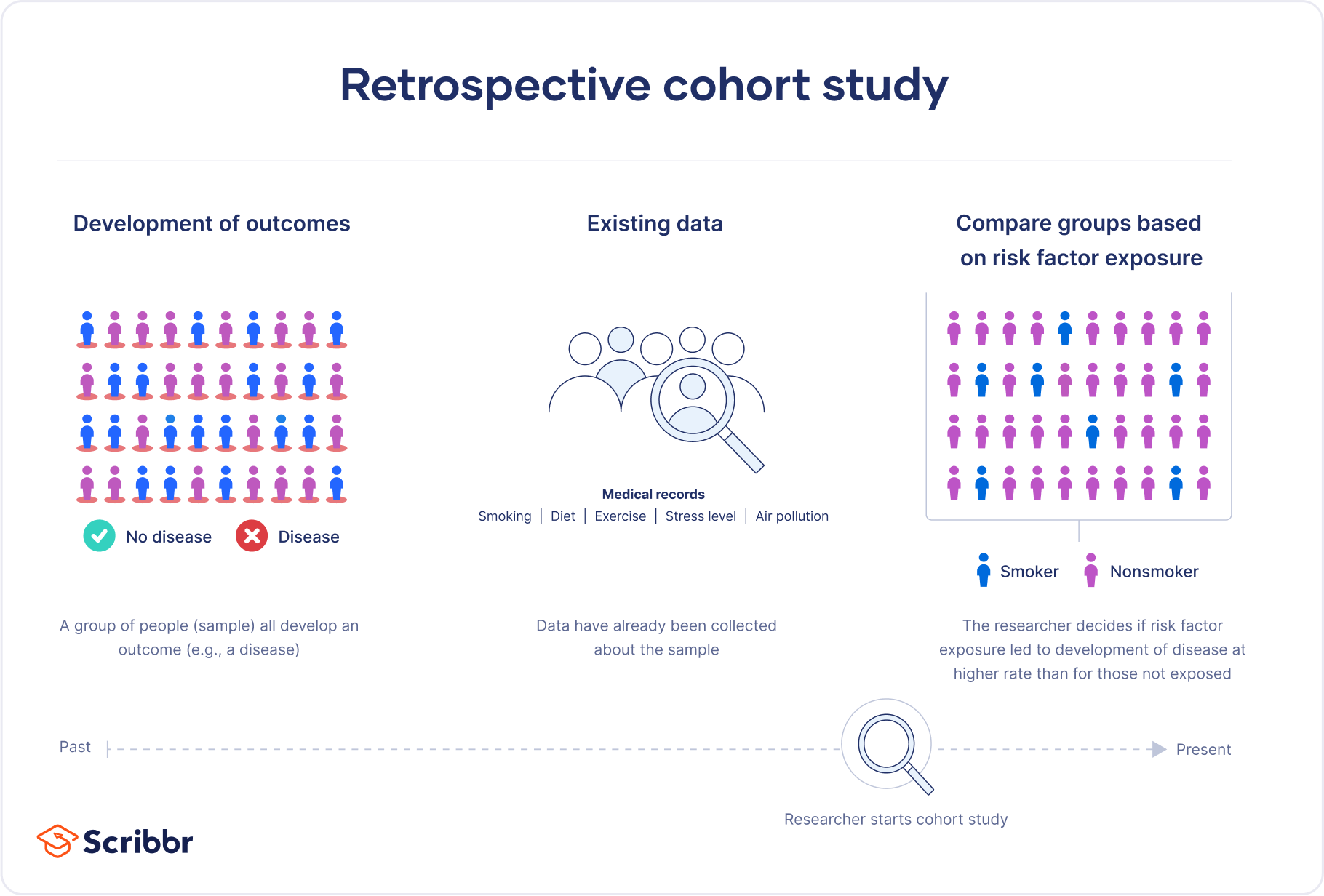What Is a Retrospective Cohort Study? | Definition & Examples
A retrospective cohort study is a type of observational study that focuses on individuals who have an exposure to a disease or risk factor in common. Retrospective cohort studies analyse the health outcomes over a period of time to form connections and assess the risk of a given outcome associated with a given exposure.
It is crucial to note that in order to be considered a retrospective cohort study, your participants must already possess the disease or health outcome being studied.
When to use a retrospective cohort study
Retrospective cohort studies are a type of observational study. They are often used in fields related to medicine to study the effect of exposures on health outcomes. While most observational studies are qualitative in nature, retrospective cohort studies are often quantitative, as they use preexisting secondary research data. They can be used to conduct both exploratoy research and explanatory research.
Retrospective cohort studies are often used as an intermediate step between a weaker preliminary study and a prospective cohort study, as the results gleaned from a retrospective cohort study strengthen assumptions behind a future prospective cohort study.
A retrospective cohort study could be a good fit for your research if:
- A prospective cohort study is not (yet) feasible for the variables you are investigating.
- You need to quickly examine the effect of an exposure, outbreak, or treatment on an outcome.
- You are seeking to investigate an early-stage or potential association between your variables of interest.
Retrospective cohort studies use secondary research data, such as existing medical records or databases, to identify a group of people with an exposure or risk factor in common. They then observe their health outcomes over time. Case-control studies rely on primary research, comparing a group of participants with a condition of interest to a group lacking that condition in real time.
Cohort studies in general are more longitudinal in nature than case-control studies. They don’t always have a control group, because members of the cohort are primarily selected because they already share a particular characteristic.
Examples of retrospective cohort studies
Retrospective cohort studies are common in fields like medicine, epidemiology, and healthcare.
You collect data from participants’ exposure to organophosphates, focusing on variables like the timing and duration of exposure, and analyse the health effects of the exposure.
You collect data from participants with skin cancer who used tanning beds, focusing on variables like the amount of visits, length of visits, and type of tanning bed used. You then analyse the potential risk factor of tanning bed use on skin cancer.
Advantages and disadvantages of retrospective cohort studies
Retrospective cohort studies can be a good fit for many research projects, but they have their share of advantages and disadvantages.
Advantages of retrospective cohort studies
- Retrospective cohort studies are a great choice if you have any ethical considerations or concerns about your participants that prevent you from pursuing a traditional experimental design.
- Retrospective cohort studies are quite efficient in terms of time and budget. They require fewer subjects than other research methods and use preexisting secondary research data to analyse them.
- Retrospective cohort studies are particularly useful when studying rare or unusual exposures, as well as diseases with a long latency or incubation period where prospective cohort studies cannot yet form conclusions.
Disadvantages of retrospective cohort studies
- Like many observational studies, retrospective cohort studies are at high risk for many research biases. They are particularly at risk for recall bias and observer bias due to their reliance on memory and self-reported data.
- Retrospective cohort studies are not a particularly strong standalone method, as they can never establish causality. This leads to low internal validity and external validity.
- As most patients will have had a range of healthcare professionals involved in their care over their lifetime, there is significant variability in the measurement of risk factors and outcomes. This leads to issues with reliability and credibility of data collected.
Frequently asked questions
Cite this Scribbr article
If you want to cite this source, you can copy and paste the citation or click the ‘Cite this Scribbr article’ button to automatically add the citation to our free Reference Generator.
George, T. (2023, June 19). What Is a Retrospective Cohort Study? | Definition & Examples. Scribbr. Retrieved 27 October 2025, from https://www.scribbr.co.uk/research-methods/retrospective-cohort-studies/
